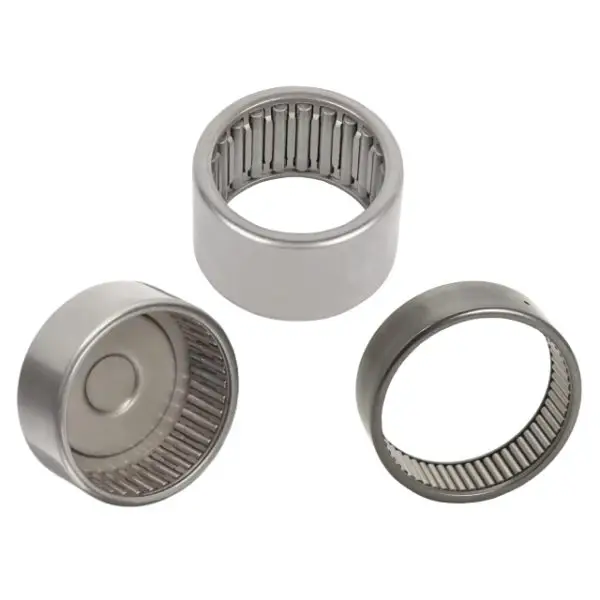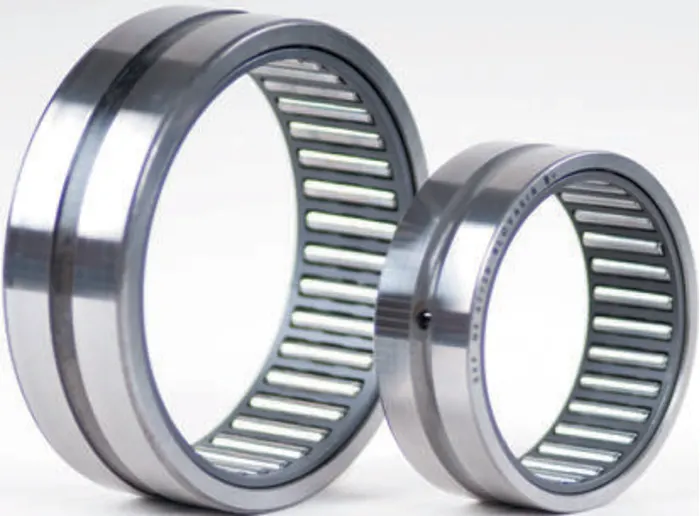Enhancement of Medical Devices and Instruments through Needle Bearings
Needle bearings play a crucial role in enhancing the functionality and precision of various medical devices and instruments. Their unique design characteristics make them well-suited for applications in the medical field, where accuracy, reliability, and smooth operation are paramount. Here’s how needle bearings improve the functionality of medical devices and instruments:
- Surgical Instruments:
1. Surgical Drills and Tools:
Needle bearings are used in surgical drills and powered tools to facilitate precise and controlled rotational movement. These bearings provide low friction and maintain consistent performance, allowing surgeons to perform delicate procedures with accuracy.
- Medical Imaging Equipment:
1. X-Ray Machines and CT Scanners:
Needle bearings are employed in the rotating components of X-ray machines and CT scanners. The smooth rotation enabled by needle bearings ensures accurate positioning and imaging, reducing image artifacts and enhancing diagnostic capabilities.
- Diagnostic Instruments:
1. Blood Analysis Machines:
Needle bearings contribute to the smooth operation of blood analysis machines, ensuring precise movement of components that handle blood samples. This accuracy is vital for obtaining reliable diagnostic results.
- Pharmaceutical Devices:
1. Drug Dispensing Systems:
Needle bearings are used in drug dispensing systems to ensure precise and consistent delivery of medications. The smooth movement of these bearings contributes to accurate dosage administration.
- Patient Beds and Equipment:
1. Adjustable Beds and Chairs:
Needle bearings are utilized in adjustable beds and patient chairs to facilitate smooth and precise adjustments. These bearings enhance patient comfort and allow healthcare professionals to position patients accurately.
- Microsurgery Devices:
1. Microsurgery Instruments:
Microsurgery requires utmost precision, and needle bearings play a vital role in ensuring the accuracy of microsurgery instruments. These bearings enable controlled movement, allowing surgeons to perform intricate procedures with minimal disruption.
By incorporating needle bearings into medical devices and instruments, manufacturers achieve several benefits:
- Precision:
Needle bearings enable accurate and controlled movement, critical in medical procedures where precision is essential.
- Reliability:
The reliable performance of needle bearings ensures consistent operation of medical devices, reducing the risk of malfunctions during critical procedures.
- Smooth Operation:
The low-friction design of needle bearings contributes to smooth and friction-free movement in medical devices, enhancing overall functionality.
- Reduced Wear:
Needle bearings’ ability to distribute loads evenly reduces wear and prolongs the lifespan of components, minimizing the need for frequent replacements.
- Accuracy:
Accurate movement provided by needle bearings enhances the precision of medical imaging and diagnostic equipment, leading to more reliable results.
Needle bearings are an integral part of medical devices and instruments, contributing to improved patient care, accurate diagnostics, and successful medical procedures.
Common Signs of Wear or Damage in Needle Bearings and Replacement Timing
Needle bearings, like any mechanical component, can experience wear or damage over time due to factors such as load, speed, contamination, and improper maintenance. Recognizing the signs of wear or damage in needle bearings is crucial to ensuring the continued efficiency and reliability of machinery. Here are the common signs of wear or damage and when needle bearings should be replaced:
- Unusual Noise:
Increased noise, grinding, or rattling sounds during operation can indicate internal damage or wear in needle bearings. Unusual noise is often an early warning sign that replacement is needed.
- Irregular Operation:
Any irregularities in the smoothness of motion, such as sticking, binding, or rough movement, can indicate that the needle bearings are no longer functioning properly.
- Increased Friction and Heat:
If you notice higher operating temperatures or increased friction, it may suggest that the bearings are experiencing excessive wear. Elevated temperatures can lead to premature failure.
- Visible Wear or Pitting:
Inspect the needle bearings visually for signs of wear, pitting, or corrosion on the bearing surfaces. These issues can affect the bearing’s ability to operate correctly.
- Lubrication Issues:
Reduced lubrication can lead to increased wear and damage. If you notice inadequate lubrication or the presence of contaminants in the lubricant, it’s time to address the issue.
- Abnormal Vibration:
If you experience unusual vibrations during operation, it could be a sign that the needle bearings are no longer providing proper support and load distribution.
- Excessive Play or Clearance:
Excessive play or looseness in the bearing assembly can indicate that the internal components are worn out, affecting the bearing’s performance.
- Reduced Performance:
If your machinery or equipment is not performing as expected, it could be due to deteriorating needle bearings that are no longer able to handle the required loads and speeds.
The timing for replacing needle bearings depends on factors such as the severity of wear, the application’s demands, and the manufacturer’s recommendations. In general, needle bearings should be replaced if any of the above signs are observed, as continuing to operate with damaged bearings can lead to further equipment damage, reduced efficiency, and even safety risks.
Regular maintenance, including visual inspections, proper lubrication, and adherence to manufacturer guidelines, can help extend the lifespan of needle bearings and ensure their optimal performance. When in doubt, consulting with bearing experts or manufacturers can provide guidance on when to replace needle bearings for the best results.
Factors to Consider When Selecting a Needle Bearing for a Specific Application
Choosing the right needle bearing for a specific application requires careful consideration of various factors to ensure optimal performance, reliability, and longevity. Needle bearings come in different sizes, designs, and materials, and selecting the appropriate one depends on the application’s requirements. Here are the key factors to consider when selecting a needle bearing for a specific application:
- Load Requirements:
Assess the magnitude and direction of the loads the bearing will experience. Consider both radial and axial loads and choose a needle bearing with a load capacity that matches or exceeds the application’s demands.
- Operating Conditions:
Take into account the environmental conditions the bearing will operate in, including temperature, humidity, and exposure to contaminants. Choose a needle bearing with appropriate lubrication and sealing options to ensure reliable performance under the given conditions.
- Installation Space:
Measure the available installation space to determine the bearing’s size and dimensions. Ensure that the selected needle bearing can fit within the allocated space without causing interference or alignment issues.
- Speed and Accuracy:
Consider the required rotational speed and level of precision for the application. High-speed applications may require needle bearings with low friction and reduced heat generation, while precision applications demand accurate and smooth motion.
- Alignment and Tolerance:
Check if the application requires specific alignment or tolerance levels. Some needle bearings are designed to accommodate misalignment to a certain extent, while others may require precise alignment for optimal performance.
- Service Life:
Evaluate the expected service life of the bearing based on the application’s load cycles and operating conditions. Select a needle bearing with a service life that aligns with the desired maintenance intervals and equipment uptime.
- Material and Coatings:
Choose the appropriate bearing material and coatings based on factors such as corrosion resistance, wear resistance, and operating temperature. Consider factors like the type of lubrication used and the compatibility with the application’s environment.
- Lubrication Requirements:
Determine the lubrication method and interval required for the bearing. Some needle bearings come pre-greased, while others may need periodic lubrication. Select a bearing that matches the lubrication strategy of the application.
- Budget and Cost-Effectiveness:
Consider the budget constraints of the project and balance the cost of the bearing with its expected performance and durability. While higher-quality bearings may have a higher upfront cost, they can lead to cost savings over the long term.
- Application-Specific Features:
Some applications may require specific features, such as seals, cages, or special coatings. Evaluate whether these features are necessary for the intended application and select a needle bearing that offers the required specifications.
By carefully evaluating these factors and aligning them with the application’s requirements, you can choose the most suitable needle bearing that will contribute to the overall performance and reliability of the equipment or machinery.
editor by CX 2024-04-11



